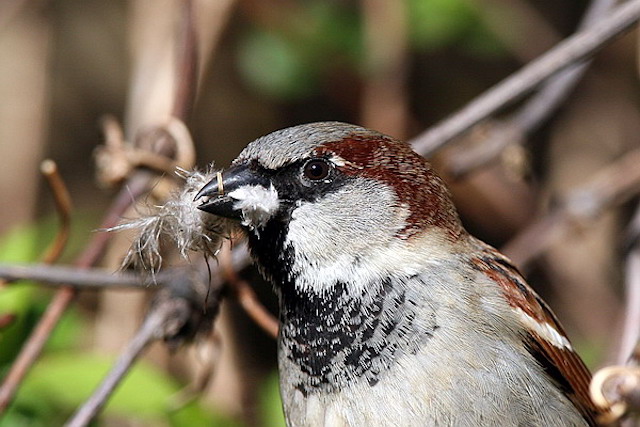House Sparrow Passer domesticus
Abundant resident and partial migrant.

Always a very widespread and abundant bird the humble House Sparrow was estimated in the Atlas to have a population somewhere between 70,000 and 130,000 pairs in the late 1980s. In the open countryside it tends to be confined as a breeder to farm buildings. Lincs BBS index data shows that the population has fallen overall by 10% (not significant) during the period 1994-2019, while it has remained more stable across the UK in that time. The big fall that led to its red data designation came during the 1980s. The APEP4 adjustment methodology suggests the Lincs population in 2016 was around 130,000 implying that perhaps the Atlas estimate should be weighted towards the top end of the range. It generally comes second each year as the most frequently counted bird on Lincolnshire BBS squares after Woodpigeon, Columba palumbus.
Ringing data shows that some House Sparrows in Lincolnshire may live for up to 10 years of age. Movements of ringed birds only rarely exceed 100km; one bird ringed at Gibraltar Point October 18th 1964 was recovered, shot, in Leeds February 3rd 1965. In the wider context, longer movements have been recorded elsewhere in the UK (600+ km.) and there have been a few recoveries in coastal Europe of birds ringed on the south coast.
(Updated with reference to the new Birds of Lincolnshire (2021) December 2022)
